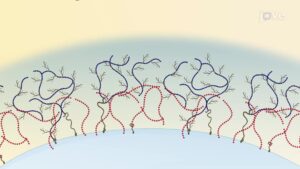Red light therapy is rapidly gaining attention for its wide range of potential health and wellness benefits. From reducing inflammation to enhancing muscle recovery and even supporting anti-aging goals, this non-invasive treatment offers a range of scientifically supported applications that can benefit nearly everyone.
What Is Red Light Therapy?
Red light therapy involves exposing the body to low-wavelength red or near-infrared light. Unlike ultraviolet (UV) rays, which can damage the skin, red light is considered safe and is believed to promote healing, energy production, and cellular repair. The treatment is often delivered through panels, localized boxes, or full-body beds that resemble tanning beds—without the harmful rays.
General vs. Localized Exposure
There are two primary types of exposure:
- Localized: Targets specific areas like joints, the face, or muscles using smaller devices or pads.
- Generalized: Involves full-body exposure using large panels or infrared sauna-style chambers.
Localized therapy is often used for joint pain, skin treatments, or facial rejuvenation, while generalized setups offer benefits across the entire body in a shorter session.
Proven Medical Uses of Red Light Therapy
Scientific literature supports red light therapy for a variety of conditions. Evidence-based uses include:
- Joint inflammation (e.g., knee osteoarthritis, lower back pain)
- Tendon discomfort and post-workout recovery
- Headache and migraine relief
- Collagen production and reduction in wrinkles
- Hair regrowth in cases of androgenic alopecia
Some users also report improvements in seasonal affective disorder, using light boxes during winter months to mimic sunlight exposure.
How It Works on a Cellular Level
The treatment is thought to stimulate mitochondria—the “powerhouse” of the cell—boosting adenosine triphosphate (ATP) production. More ATP means enhanced tissue repair, muscle regeneration, and gene expression. This energy boost is especially useful for athletes, as studies have shown improved strength, endurance, and muscle recovery in younger subjects after using red light therapy.
Understanding the Wavelengths
There are three key types of infrared wavelengths:
- Near Infrared (700–1400 nm): Deepest penetration; ideal for muscle recovery, collagen support, and anti-aging.
- Mid Infrared (1400–3000 nm): Reaches soft tissues and joints; useful for pain relief and detoxification.
- Far Infrared (3000+ nm): Affects surface-level tissues; more commonly used in saunas for skin and circulation benefits.
It’s important to note that effective red light therapy devices often emit invisible light. If a device glows visibly red, it may not be using true near-infrared wavelengths. Always check the wavelength specs when purchasing a device for home use.

Home Use and Safety Considerations
Many high-quality red light therapy devices are available for home use. These can be particularly helpful for those managing chronic pain, athletic recovery, or aesthetic goals like reducing fine lines. The treatment is generally considered very safe, with the main precaution being eye protection—red light should never be directed into the eyes without proper safety glasses.
Some users with darker skin pigmentation may experience mild irritation or a sunburn-like effect, especially with longer or more intense exposure. Adjusting intensity and session time can help reduce this risk.
Red Light Therapy for Athletes and Everyday Use
Studies suggest red light therapy may enhance performance in physically active individuals by increasing muscle strength and cellular energy. While research in older populations has shown mixed results, improvements in muscle size and post-exercise recovery have been documented.
Beyond athletic use, the treatment shows promise for individuals managing chronic inflammation, recovering from mold exposure, or seeking to improve their skin’s appearance—all without invasive procedures or harsh chemicals.
Final Thoughts
Red light therapy continues to show great promise as a wellness tool. Its benefits are broad, spanning joint health, athletic performance, and anti-aging. While more studies are ongoing, the current evidence suggests it’s a low-risk therapy worth exploring for those looking to boost recovery, reduce inflammation, or support overall health.
Video Summary
For a full discussion on how red light therapy works and what to expect, watch the video below.
Subscribe for more expert discussions on nutrition, fitness, and wellness: https://www.youtube.com/@Vitality-and-Wellness



